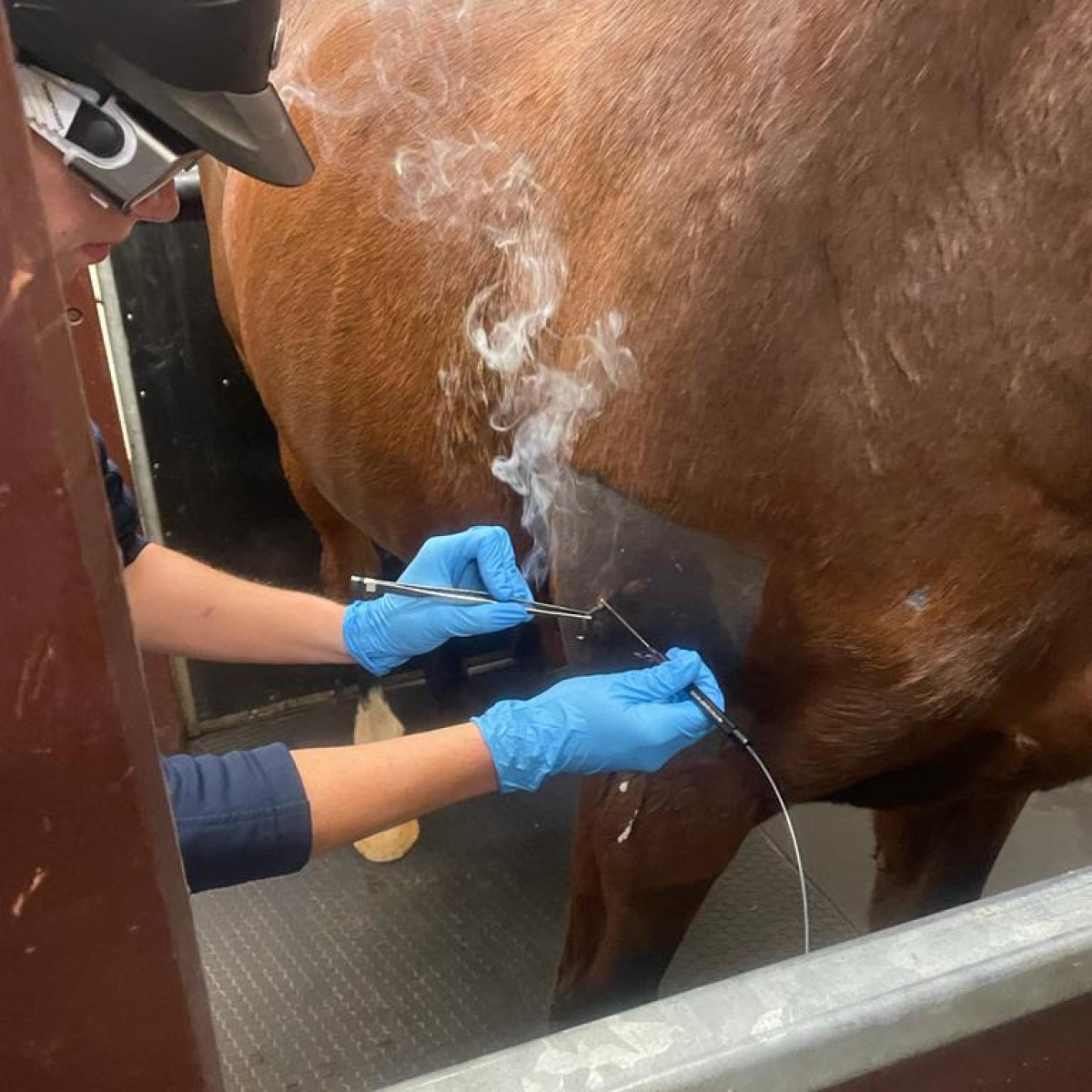Checking Out the Holistic Method of Equine Therapy for Individual Development
Checking Out the Holistic Method of Equine Therapy for Individual Development
Blog Article
Just How Laser Therapy in Equine Therapy Is Revolutionizing Veterinary Look After Horses
Laser treatment has become a transformative approach in equine veterinary care, supplying a non-invasive solution that speeds up healing and enhances general health. Leveraging specific light wavelengths, this cutting-edge therapy promotes mobile regeneration, minimizes inflammation, and mitigates pain. Its efficiency expands from musculoskeletal injuries to chronic conditions like osteoarthritis, considerably enhancing mobility and life quality for steeds. The mobility and versatility of laser therapy tools even more emphasize their growing indispensability among vets. As we check out the elaborate auto mechanics and real-world successes, the extensive effect on equine medical techniques comes to be progressively obvious.
Comprehending Laser Therapy

The technology behind laser therapy is based in the principle of photochemistry, where photons are absorbed by chromophores within cells, leading to enhanced ATP manufacturing and modulation of responsive oxygen types (Equine Therapy). This, in turn, promotes cellular expansion, minimizes inflammation, and speeds up recovery. Vet professionals utilize different kinds of lasers, consisting of low-level lasers (LLLT) and high-power Class IV lasers, depending upon the specific restorative goals and the nature of the equine condition being dealt with
Different laser wavelengths and power settings are carefully picked to target different cells depths and attain preferred clinical end results. Safety and security protocols are extremely important, as improper use can cause thermal damages or suboptimal healing effects. Thus, a comprehensive understanding of laser therapy's systems and applications is vital for its reliable implementation in equine veterinary method.
Benefits for Horse Health
The myriad advantages of laser treatment for equine health and wellness incorporate boosted recovery, discomfort decrease, and improved movement. This advanced treatment modality leverages specific wavelengths of light to permeate tissues, stimulating mobile function and advertising fast tissue fixing. The non-invasive nature of laser treatment makes sure very little stress and anxiety and discomfort for the steed, promoting a smoother recovery procedure.
Boosted recovery is one of the primary benefits, as laser treatment increases mobile regeneration and collagen synthesis. Pain reduction is attained through the anti-inflammatory results of laser treatment, which reduces swelling and minimizes the manufacturing of pain-inducing chemicals.
By minimizing inflammation and discomfort, and boosting tissue repair work, laser treatment helps in restoring joint feature and muscle versatility. Hence, laser treatment stands as a transformative tool in modern equine veterinary treatment.
Usual Problems Dealt With
Laser therapy has arised as a versatile treatment alternative for a variety of usual equine problems. Furthermore, laser treatment is efficient for conditions like osteoarthritis, where it aids reduce joint inflammation and advertise cells fixing.
Wound management is another location where laser therapy has actually revealed significant promise. Chronic injuries or slow-healing ulcers can be particularly tough in steeds, yet laser treatment boosts mobile regeneration and boosts blood circulation, hence accelerating the healing process. In addition, laser treatments have been effectively utilized in managing hoof conditions such as laminitis and abscesses, relieving discomfort and promoting much faster recuperation.

Modern Technology Behind Laser Therapy
Beyond the myriad problems treatable with laser treatment, the technology itself benefits more detailed exam. At the heart of laser treatment is using details wavelengths of light to penetrate cells and evoke biological feedbacks. These wavelengths, commonly varying from 600 to 1000 nanometers, are precisely soaked up by chromophores in the skin, muscular tissue, and other tissues, instigating a cascade of mobile occasions.
Laser devices used in veterinary medicine page usually utilize low-level laser treatment (LLLT) or chilly laser treatment. Unlike high-powered surgical lasers, these tools operate at reduced power degrees, enhancing therapeutic advantages while reducing thermal damage. The energy from the laser light stimulates adenosine triphosphate (ATP) production, boosts cellular metabolism, and speeds up cells repair service processes.

Success Stories and Study

Showcasing the concrete benefits of laser treatment, countless success tales and study brighten its transformative influence on equine health. One such situation entails a pure-blooded racehorse suffering from chronic tendonitis. Traditional treatments generated very little improvement, yet after integrating laser treatment into the regimen, the steed exhibited considerable decreases in swelling and discomfort within weeks, eventually going back to competitive racing.
One more compelling instance includes a dressage horse diagnosed with severe back pain, limiting its efficiency. A veterinary group used low-level laser therapy (LLLT) to target the inflamed areas, resulting in significant improvement in adaptability and a notable reduction in pain. Over several sessions, the steed restored its peak kind, showcasing the effectiveness of laser treatment in resolving bone and joint concerns.
Furthermore, a research carried out at a leading equine clinic taken a look at 50 steeds with various soft cells injuries treated with laser therapy. The results were striking: 85% of the horses demonstrated sped up recovery times and enhanced movement. These cases underscore the convenience and performance of laser therapy in equine medicine, supplying a non-invasive, scientifically-backed method to enhancing recovery and performance in steeds.
Verdict
Laser treatment is transforming equine vet care by supplying a non-invasive therapy that speeds up recovery, minimizes inflammation, and eases discomfort. With its efficiency in dealing with a series of problems, from bone and joint injuries to chronic why not look here ailments like osteo arthritis, this innovation significantly boosts equine health and mobility. The portability and flexibility of laser therapy further underscore its transformative influence on veterinary practices, solidifying its duty as an important device in modern-day equine healthcare.
Report this page